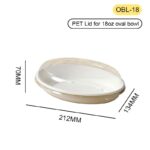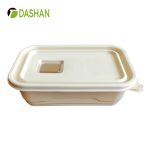Quick Summary
This article explores sugarcane bagasse and cornstarch as eco-friendly alternatives to plastic packaging for hamburgers. Both materials are biodegradable, compostable, and derived from renewable resources. Sugarcane bagasse is ideal for hot, greasy foods due to its excellent heat and oil resistance, while cornstarch packaging offers a cost-effective option for lighter, less greasy foods. By switching to these materials, businesses can reduce their carbon footprint and appeal to eco-conscious consumers.
Introduction: The Growing Need for Eco-Friendly Packaging in the Fast Food Industry
Hamburgers have become a staple in global fast food, but their environmental impact, particularly through packaging, has become a major issue. Plastic packaging, commonly used for hamburgers and fries, contributes significantly to global pollution, particularly marine pollution. According to the United Nations Environment Programme (UNEP), around 8 million tons of plastic enter the ocean each year. This growing environmental concern has pushed many businesses, including fast food chains, to consider more sustainable packaging alternatives.
This article explores two key eco-friendly materials for hamburger packaging: sugarcane bagasse and cornstarch. These materials not only help reduce the environmental burden caused by plastic packaging but also provide businesses with sustainable, practical, and consumer-appealing options.

Chapter 1: The Environmental Impact of Fast Food Packaging
Plastic Waste and the Global Crisis
The global plastic waste crisis is one of the most critical challenges in environmental conservation. According to the World Economic Forum (2021), about 40% of all plastic waste comes from packaging. Fast food packaging—such as plastic burger containers and wrappers—is a large part of this issue.
-
8 million tons of plastic end up in the ocean every year, harming marine life and ecosystems.
-
40% of global plastic production is used for packaging, which is typically single-use.
Government Regulations and Plastic Bans
Countries across the globe are responding to the plastic crisis with stronger regulations:
-
The European Union has mandated that certain plastic items, including packaging, must be phased out by 2021.
-
Canada has pledged to ban single-use plastics by 2022.
-
India and several other nations are also taking similar steps.
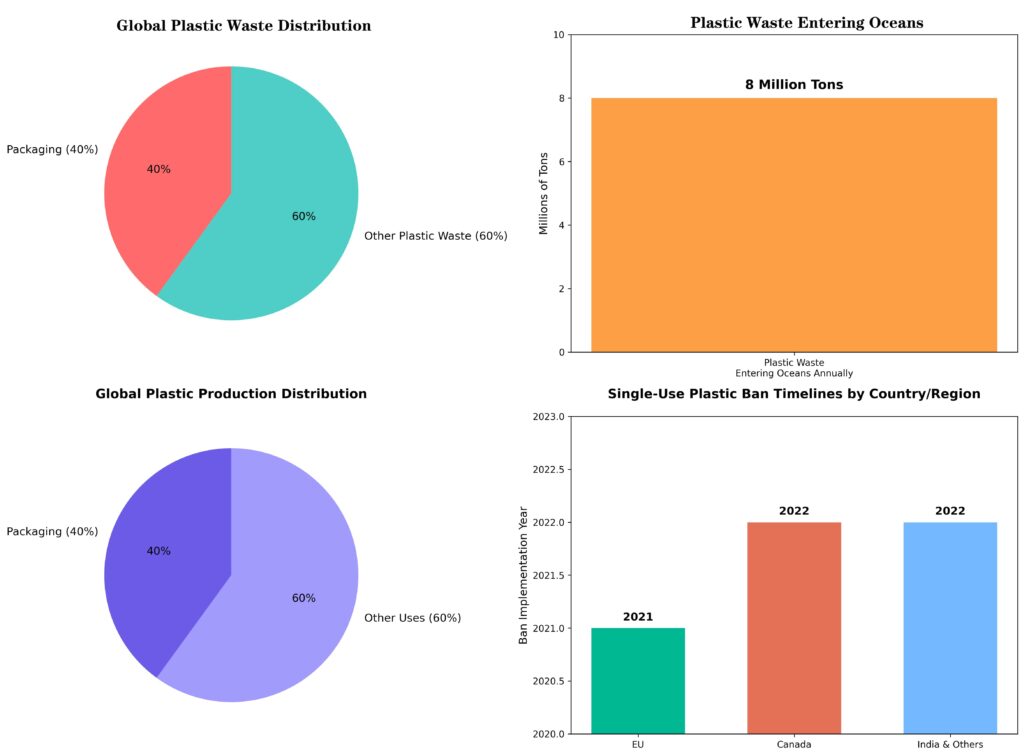
Chapter 2: The Rise of Sugarcane Bagasse and Cornstarch Packaging
What Makes a Material Eco-Friendly?
Eco-friendly packaging materials generally have several characteristics:
-
Biodegradability: The material breaks down naturally in the environment without leaving harmful residues.
-
Compostability: The material can be composted in an industrial facility or home composting systems.
-
Low Carbon Footprint: Materials produced with lower energy consumption and fewer carbon emissions than plastic.
-
Renewability: Derived from renewable natural resources like corn or sugarcane.
In this section, we will focus on sugarcane bagasse and cornstarch as two excellent alternatives.
| Environmental Impact | Sugarcane Bagasse Packaging | Cornstarch Packaging | Traditional Plastic Packaging |
|---|---|---|---|
| CO2 Emissions (per ton of material produced) | 30-50% reduction | 20-40% reduction | High CO2 emissions |
| Energy Consumption | Low | Low | High |
| Resource Consumption | Renewable resource: Sugarcane | Renewable resource: Corn | Non-renewable resource: Petroleum |
| Waste Management | Biodegradable, safe disposal | Biodegradable, safe disposal | Long-lasting waste, environmental pollution |
| Marine Pollution Potential | Low (100% Degradable) | Low (100% Degradable) | High (Long-lasting plastic waste) |
Chapter 3: Sugarcane Bagasse-Based Packaging
What is Sugarcane Bagasse?
Sugarcane bagasse is the fibrous material left after extracting juice from sugarcane. It is a byproduct of the sugar industry, traditionally discarded as waste. Instead, it is processed into sustainable packaging products like trays, plates, and containers.
Key Benefits of Sugarcane Bagasse Packaging:
-
Biodegradable: Breaks down in 30 to 90 days.
-
Water and Oil Resistance: Ideal for greasy foods like hamburgers, as it resists moisture and oil.
-
Strength and Durability: Sturdy enough to hold hot and heavy food items.
-
Renewable Resource: Sugarcane is an easily replenished resource, ensuring sustainability.
Real-World Example:
A New York-based fast-food chain switched to sugarcane bagasse packaging for its burgers and fries, reducing its carbon footprint by 25% within the first year.
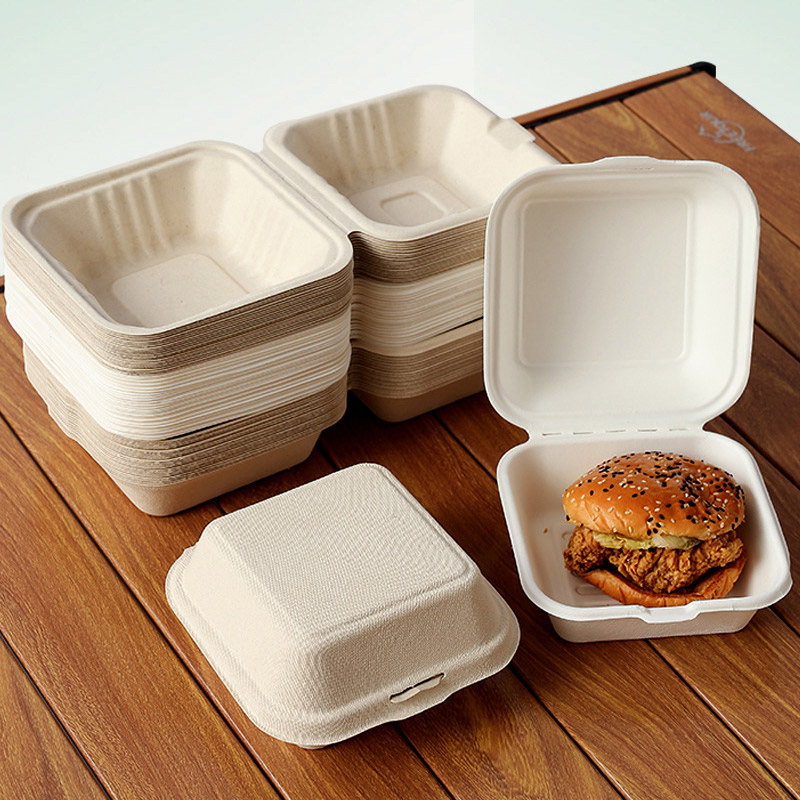
Chapter 4: Cornstarch-Based Packaging
What is Cornstarch Packaging?
Cornstarch is derived from corn kernels and processed into a biodegradable alternative to plastic. Cornstarch packaging is widely used for food containers, plates, and cutlery.
Key Benefits of Cornstarch Packaging:
-
Biodegradable: Breaks down within 30 to 60 days in industrial composting facilities.
-
Low Carbon Footprint: Manufacturing cornstarch packaging involves fewer carbon emissions compared to plastic production.
-
Compostable: It is compostable and does not contribute to landfill waste.
-
Food-Safe: It is non-toxic and safe for food contact.
Real-World Example:
A California-based restaurant chain switched to cornstarch packaging for its take-out, reducing plastic usage by 50% within the first year.

Chapter 5: Environmental Impact: How Sugarcane Bagasse and Cornstarch Reduce the Burden
Reducing Carbon Footprint
Both sugarcane bagasse and cornstarch are produced with a much lower carbon footprint compared to plastic. Switching to these eco-friendly materials can lead to significant reductions in greenhouse gas emissions. Here’s how:
-
Sugarcane Bagasse: A study by the Food Packaging Forum (2019) found that using bagasse over plastic could reduce 30-50% of carbon emissions.
-
Cornstarch: According to the Environmental Defense Fund, replacing plastic with cornstarch could cut emissions by up to 40%.
Waste Reduction
Switching to eco-friendly packaging has the potential to reduce significant amounts of waste. For instance, sugarcane bagasse and cornstarch break down much faster than plastic.
Comparison of Environmental Benefits:
| Environmental Impact | Sugarcane Bagasse | Cornstarch Packaging |
|---|---|---|
| Carbon Emissions | 30-50% reduction | 20-40% reduction |
| Biodegradability | 100% in 30-90 days | 100% in 30-60 days |
| Compostability | Fully compostable | Fully compostable |
| Renewability | Sugarcane (renewable resource) | Corn (renewable resource) |
| Water/Oil Resistance | High (ideal for greasy foods) | Moderate (may not withstand very hot or oily foods) |
Chapter 6: Why Choose Eco-Friendly Packaging for Your Hamburgers?
Benefits of Switching to Eco-Friendly Packaging:
-
Reduces Plastic Waste: Both sugarcane bagasse and cornstarch help reduce the amount of single-use plastic packaging ending up in landfills and oceans.
-
Improves Brand Image: Consumers are more likely to support brands that align with their values, and sustainability is increasingly important to modern consumers.
-
Cost Savings in the Long Run: Although eco-friendly packaging can have a higher upfront cost, it can result in long-term savings through waste reduction and increased customer loyalty.
Chapter 7: Conclusion
The future of fast food packaging is undoubtedly green. As consumer awareness grows and regulations on plastic packaging tighten, businesses that transition to sugarcane bagasse and cornstarch packaging will find themselves ahead of the curve. These materials are not only practical and durable for holding hamburgers but also offer substantial environmental benefits, helping to reduce waste and carbon emissions.
For businesses looking to transition to eco-friendly solutions, sugarcane bagasse is ideal for hot and greasy foods, while cornstarch offers an affordable alternative that still delivers environmental benefits.
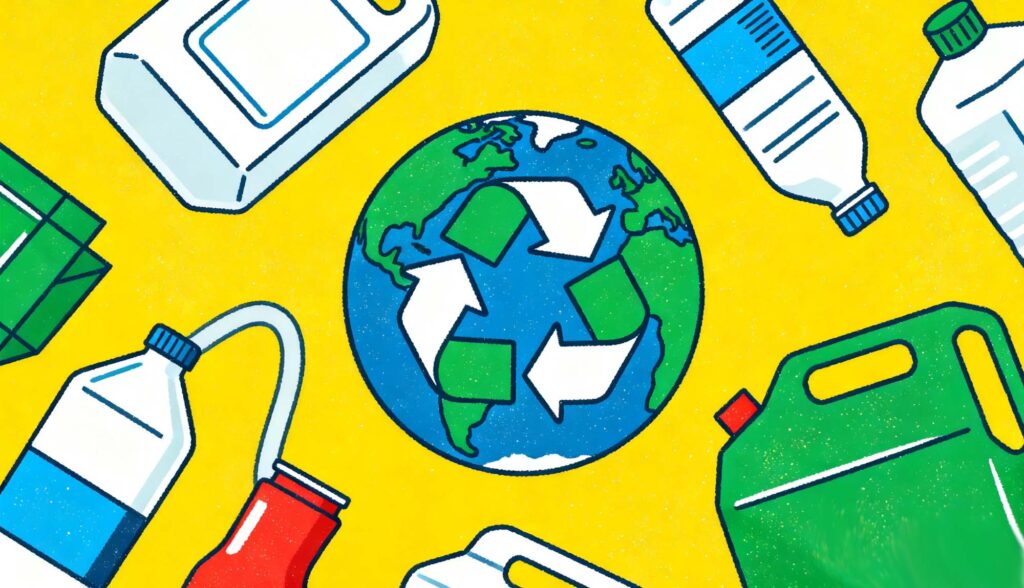
FAQ: Eco-Friendly Hamburger Packaging
1. What is sugarcane bagasse, and why is it used in food packaging?
Answer:
Sugarcane bagasse is the fibrous byproduct left after extracting juice from sugarcane. It is processed into a durable, biodegradable packaging material. Its oil and water resistance make it ideal for packaging greasy fast food items like hamburgers.
2. Is cornstarch packaging biodegradable?
Answer:
Yes, cornstarch packaging is 100% biodegradable and compostable in industrial composting facilities within 30-60 days.
3. How long does it take for sugarcane bagasse packaging to decompose?
Answer:
Sugarcane bagasse decomposes in 30-90 days, making it significantly quicker to break down than plastic, which takes hundreds of years.
4. Can cornstarch packaging withstand hot foods like hamburgers?
Answer:
Cornstarch packaging has moderate heat resistance and may not withstand very hot or oily foods like hamburgers. For such foods, sugarcane bagasse is more suitable due to its higher resistance to heat and moisture.
5. How does using sugarcane bagasse or cornstarch packaging reduce my business’s carbon footprint?
Answer:
Switching to these materials can reduce carbon emissions by 30-50% for bagasse and 20-40% for cornstarch compared to plastic, as both materials are produced using renewable resources and have a lower environmental impact.
References
-
World Economic Forum (2021). The New Plastics Economy: Rethinking the Future of Plastics. Available at: https://www.weforum.org
-
Environmental Protection Agency (EPA). Plastics and the Environment: Reducing Waste. Available at: https://www.epa.gov
-
United Nations Environment Programme (UNEP). Marine Pollution: Plastics in the Ocean. Available at: https://www.unep.org
-
Food Packaging Forum (2019). Sustainable Food Packaging Solutions: Environmental Impact of Biodegradable Materials. Available at: https://www.foodpackagingforum.org
-
Environmental Defense Fund (2020). The Future of Compostable Plastics: Reducing Plastic Waste in the Food Industry. Available at: https://www.edf.org
-
European Commission (2021). Single-Use Plastics Directive: A Greener Europe. Available at: https://ec.europa.eu
Copyright Statement
© 2025 Dashan Packing. All rights reserved.
This article is an original work created by the Dashan Packing editorial team.
All text, data, and images are the result of our independent research, industry experience,
and product development insights. Reproduction or redistribution of any part of this content
without written permission is strictly prohibited.
Dashan Packing is committed to providing accurate, evidence-based information and
to upholding transparency, originality, and compliance with global intellectual property standards.



